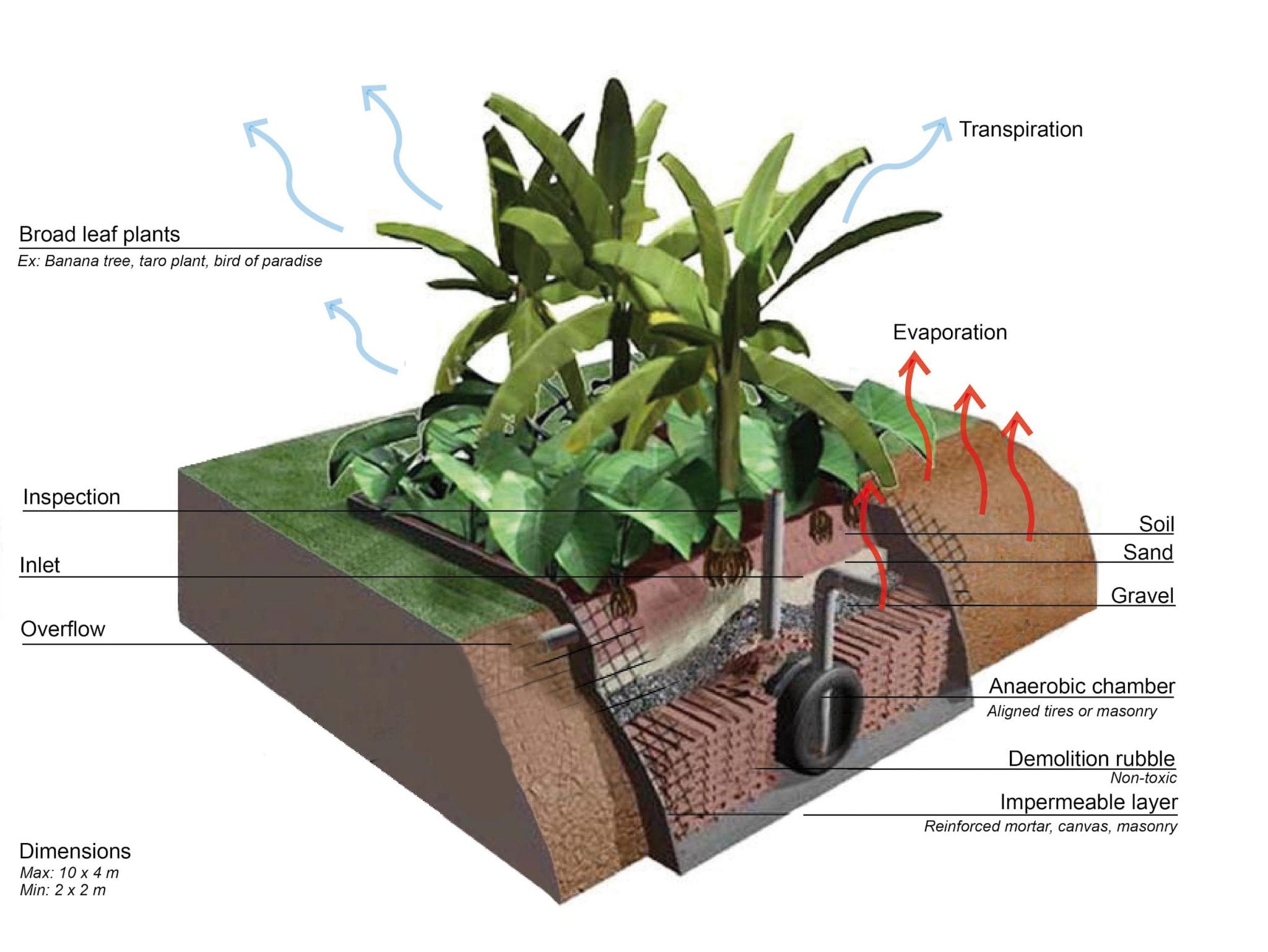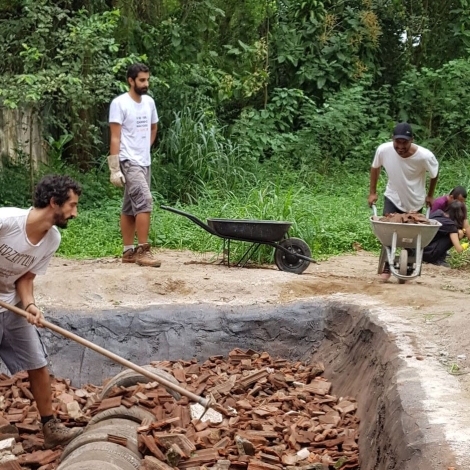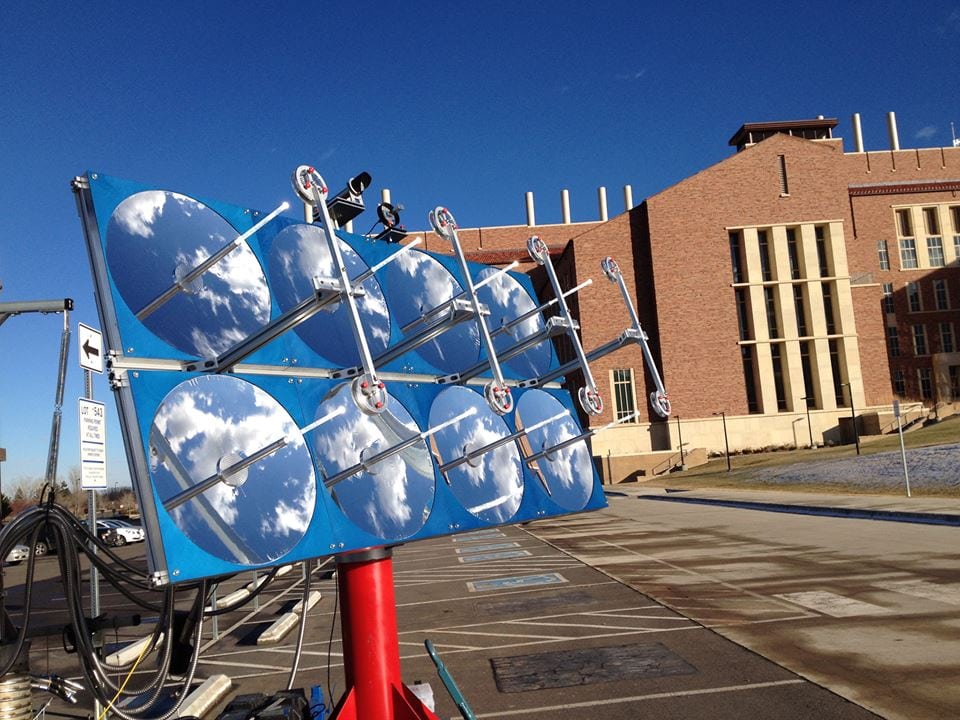“Flush and forget” or “drop and store” are some of the most common strategies for human waste “treatment” around the globe. These approaches can be seen in massive sewer systems that exhaust effluence away from communities, septic systems that hide and diffuse material locally, and common pit latrines that simply hide and cover the waste. These methods do not treat the waste so much as bury it or move it to another place in the world where it may become someone else’s problem. In doing so, households and communities are missing an incredible opportunity to turn waste into nutrients that can improve public health and reduce hunger.
Compare waste management services side by side in a standardized format at our Solutions Library
EcoSanitation is a closed-loop concept of sewage treatment that employs the planet’s natural hydrological cycle to close the gap between sanitation and agriculture. The hydrological cycle, a term we use to illustrate the paths of water between atmosphere, earth and oceans, includes the essential process of evapotranspiration. Evapotranspiration is the sum of water transfer to the atmosphere due to evaporation (from soil) and transpiration (from the metabolic processes of plants). This naturally occurring phenomenon, which separates water vapor from organic material, can be harnessed to safely process the nutrients of human waste while supporting the growth of edible fruits and vegetables.

An Evapotranspiration cell is a non-effluent system that can be engineered to contain and employ this naturally occurring process. This solution is inexpensive and requires only simple engineering construction methods. Materials include an impermeable tank containing an anaerobic chamber of old tires, demolition rubble, gravel, sand, soil and plants organized in different layers. The system combines evaporation and transpiration (water-loss from plants and soil) with anaerobic digestion and up-flow filtration which guarantees that organic material is reduced by 98 percent in order to make the system free of maintenance work for 20 years.
This solution is inexpensive and requires only simple engineering construction methods.
The system’s plants and the sun play a major role in the treatment of the organic material. Together, they evapotranspire all the water in the system out to the atmosphere. The cell must be highly insulated and plants with high water demand are mandatory. Usually, plants with broad leaves have such water demand. Banana Trees (Musa spp.) are perhaps the most suitable plants for an evapotranspiration cell, as they not only have a high water demand but also produce a lot of edible fruit. Other suitable plants include Musa spp., Heliconia spp., Strelitzia spp., Xanthosoma spp., Dioscorea spp., Colocasia spp., and Hedychium spp.
Harnessing these naturally occurring processes may provide solutions for the 2 billion people in the world that still do not have access to basic sanitation.
When done correctly, there is no overflow from the system, and the risk of groundwater contamination is drastically reduced. Water and the nutrients available within the cell are entirely consumed by the plants. The estimated area needed varies from 1 – 2 square meters per person, depending on environmental conditions.
Harnessing these naturally occurring processes may provide solutions for the 2 billion people in the world that still do not have access to basic sanitation. This technology can also help to produce food for the over 820 million people that are hungry. These sanitation systems address two of the Sustainable Development Goals: SDG2, which seeks to end hunger; and SDG6, universal access to sustainable water and sanitation services.
In Brazil, EcoSanitation principles employing evapotranspiration cell systems are being used in rural and periurban areas by communities to treat their own sewage and produce food at the same time. In Rio de Janeiro, the MUDA team from Federal University of Rio de Janeiro have been building one such system with the people of Solano Trindade community. The photos below illustrate the construction process from ground breaking to completion.


Hello, how could we get more info to design plants like this? Even better would be to know if you can help us build at least one in El Salvador so we learn and become able to duplicate
Hello! Thank you for your comment. Please provide an email address so we can send you a construction manual about this sanitation system.
Can you please send me the manual too? Will it work in temperate climates? trimbitassorin@gmail.com Thanks!
please send the manual to tomboga82@gmail.com
Kindly send me the details of construction so that I can implement this in my area.
I’d love to take a look at the manual, as well. My email is my username (no hyphen) at gmail.com. Thanks in advance!
BRAVO!!! Excellent, EXCELLENT read!!! I would love to implement this system in our area, if would please be so kind as to email me your construction manual to: my username @yahoo dot com, please and thank you for all you do… Be safe, stay vigilant… HOOAH!!!
oh it’s seems amazing! can I have the manuale, please? this is my email adresse : marcellaleoncini75@gmail.com
i just learnt a new idea today
Brilliant! would love to use this in my area some day. Great job.
my email address diomnene61@gmail.com
my email gulmoharkanha@gmail.com
Manual please emmawatsonau@protonmail.com. Thank you and many blessings.
great job! I would like to have the manual, please. Thank you very much…………………………………. marcellaleoncini75@gmail.com
This is dope! i would love to have the manual as well; Email: kyarujapheth@gmail.com